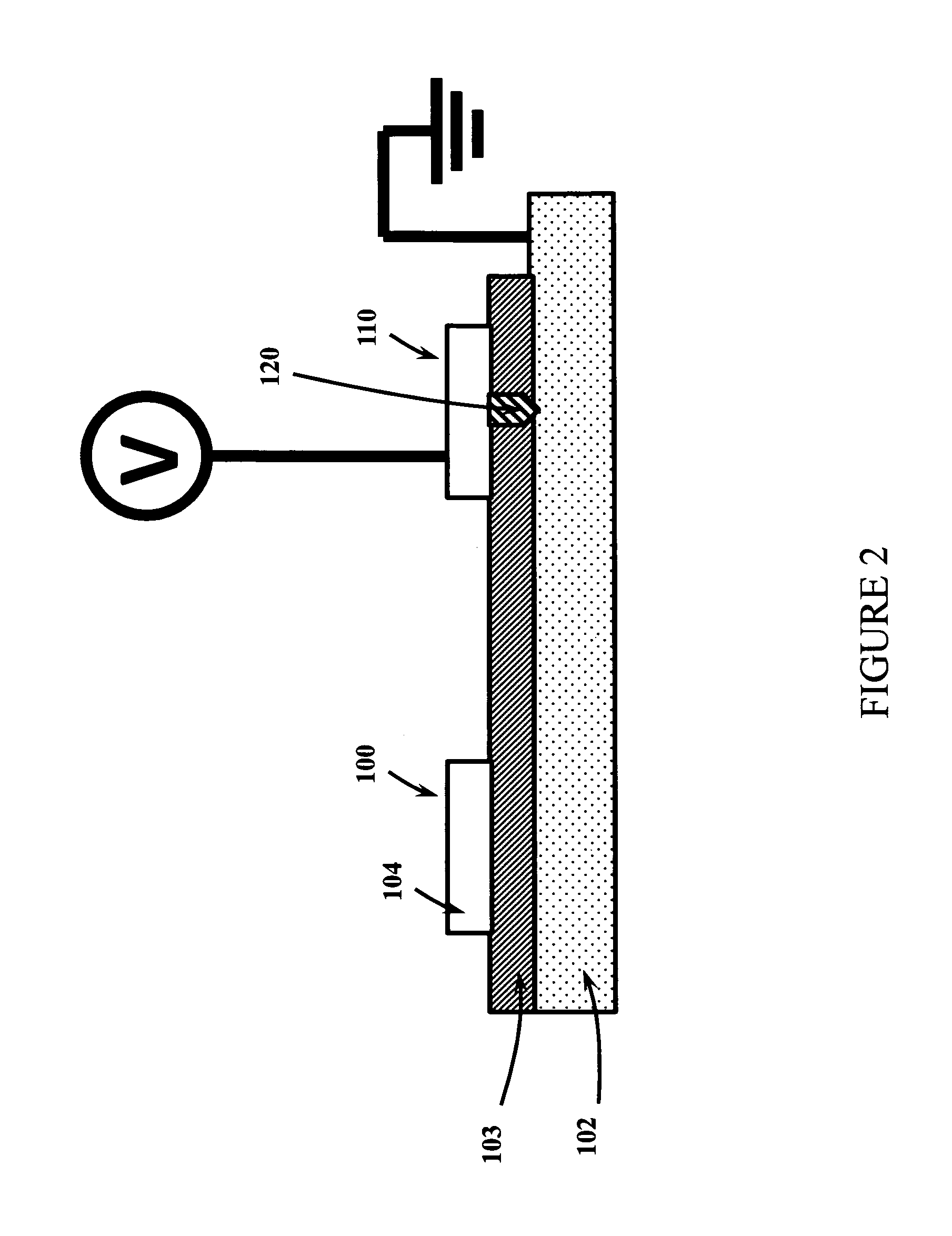Hardware based random number generator
a random number generator and hardware technology, applied in the direction of generating/distributing signals, pulse techniques, instruments, etc., can solve the problems of increasing the energy overhead of the system employing this technology, unable to deliberately replicate series, and often requiring a significant amount of hardwar
- Summary
- Abstract
- Description
- Claims
- Application Information
AI Technical Summary
Benefits of technology
Problems solved by technology
Method used
Image
Examples
Embodiment Construction
[0019]Referring to FIG. 1, the key components of the one bit hardware-based random number generator include two previously unused memristive devices 100, which share at a minimum a common bottom electrode (BE) 102. For illustration purposes, metal-insulator-metal (MIM) memristive devices are depicted in FIGS. 1-5, though this invention need not be restricted to such an implementation. The insulator material 103 may be in common between the two memristive devices 100, but the top electrodes (TE) 104 must be discrete.
[0020]Referring to FIG. 2, each virgin memristive device 100 must be individually “SET,” transitioned from a high resistance state (HRS) to a low resistance state (LRS). This is done by applying a voltage bias to the TE 104 while grounding the common BE 102. This step changes the virgin memristive device 100 to a memristive device 110 by creating a filament 120 between the TE 104 and the BE 102. At this step, the filament 120 is a low resistance filament.
[0021]Referring t...
PUM
 Login to View More
Login to View More Abstract
Description
Claims
Application Information
 Login to View More
Login to View More - R&D
- Intellectual Property
- Life Sciences
- Materials
- Tech Scout
- Unparalleled Data Quality
- Higher Quality Content
- 60% Fewer Hallucinations
Browse by: Latest US Patents, China's latest patents, Technical Efficacy Thesaurus, Application Domain, Technology Topic, Popular Technical Reports.
© 2025 PatSnap. All rights reserved.Legal|Privacy policy|Modern Slavery Act Transparency Statement|Sitemap|About US| Contact US: help@patsnap.com



